Bengal’s Imperial Getaway of Gour
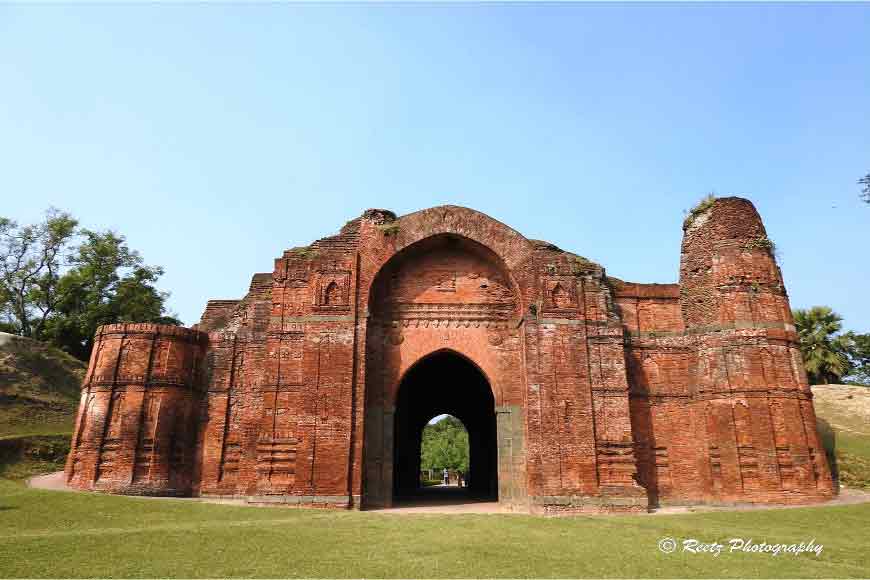
Reetwika Banerjee is a cyber security expert and a travel blogger
Gour of Malda district was once the capital of ancient Bengal, from early 5th-century till 16th-century AD, being ruled by multiple influential kingdoms from the Mauryas to Guptas, Palas, Sens, Mughals and Afghans. The place has also significant mention in Ramayana which says it was originally discovered by Laxman who named it as Lakhnauti. But another school of thought says, the city was named Lakhnauti after Lakshman Sen, the then ruler of ancient Bengal. Later it was renamed Gour (evolved from the Bengali word ‘gur’ meaning molasses).
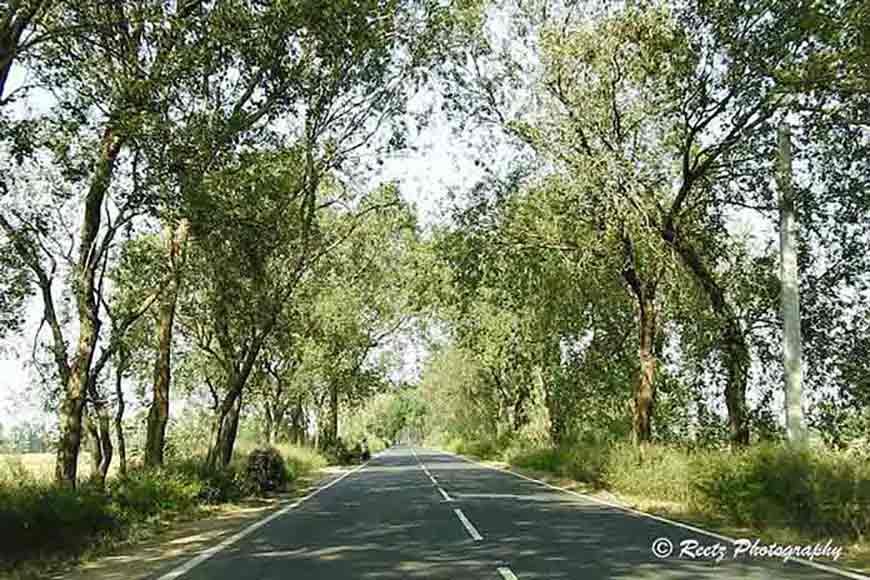 Way to Gour
Way to Gour
Whatever be the etymology of the place, every corner of it speaks of its golden past. Most of the city stands in ruins now. However, remnants of its lost grandeur have been preserved by the Archaeological Survey of India and any kind of picnic is strictly prohibited inside the historic monuments and adjoining premises. Unfortunately, there are no good accommodations around, and this place has the potential of being developed into a major tourist interest.
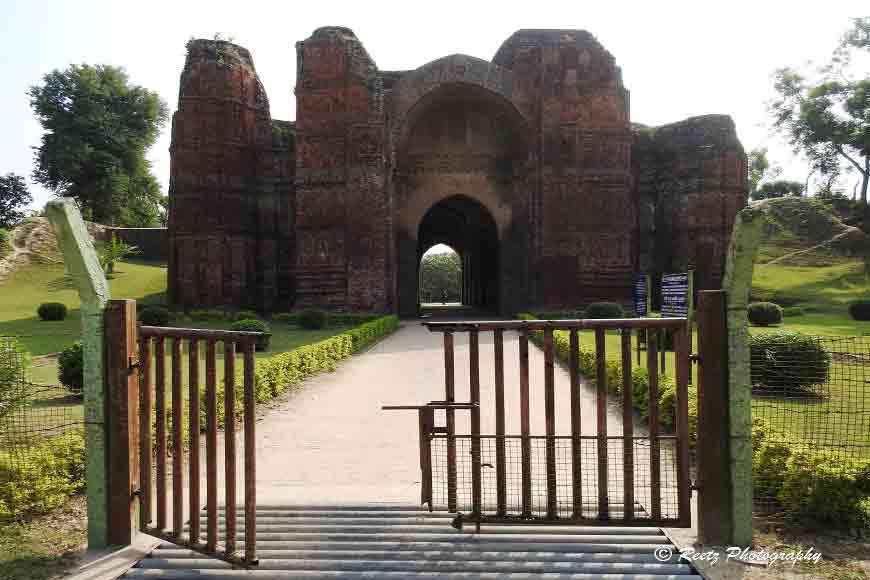 Daakhil Darwaza
Daakhil Darwaza
Gour is well connected by rail and road. We love long drives and thus preferred to self-drive to Malda by road. From Kolkata airport it is little less than 330 kilometres. There are three different routes to reach Gour, we took the one via SH7 from Barddhaman till Moregram and then NH34 till Gour. Road conditions are moderately good, with frequent bidirectional traffic in one-way lanes. Hence speed loving highway freaks may not enjoy the drive much. It can also be reached from Kolkata by the overnight Gour Express.
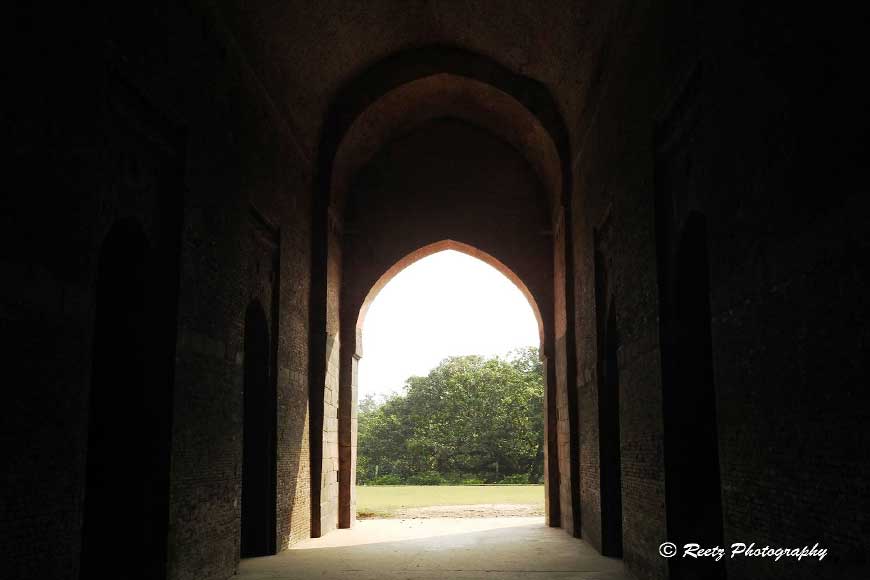 Daakhil darwaza entry portico
Daakhil darwaza entry portico
The city of Gour acted as the capital of all the ruling dynasties of Bengal and was built very differently than other cities of its time. It was highly walled (approx 22 yards in height) on all sides with one lavish entry gate in three geographical directions. The gates served as royal entrances to the inner citadel comprising of an imperial palace, a gigantic prison, huge lakes, fruit orchards, suburbs, servant quarters, tombs, mausoleums, monuments and innumerable buildings of religious importance.
The four gates in three directions are named differently, indicating their individual significance – Daakhil Darwaza (North), Kotwali Darwaza (South), Gumti Darwaza (East) and Lukochuri Darwaza (East). There are no gates in the western side as River Ganga used to flow near the castle of Gour once upon a time. But now it has changed its course and is quite far away from the fort.
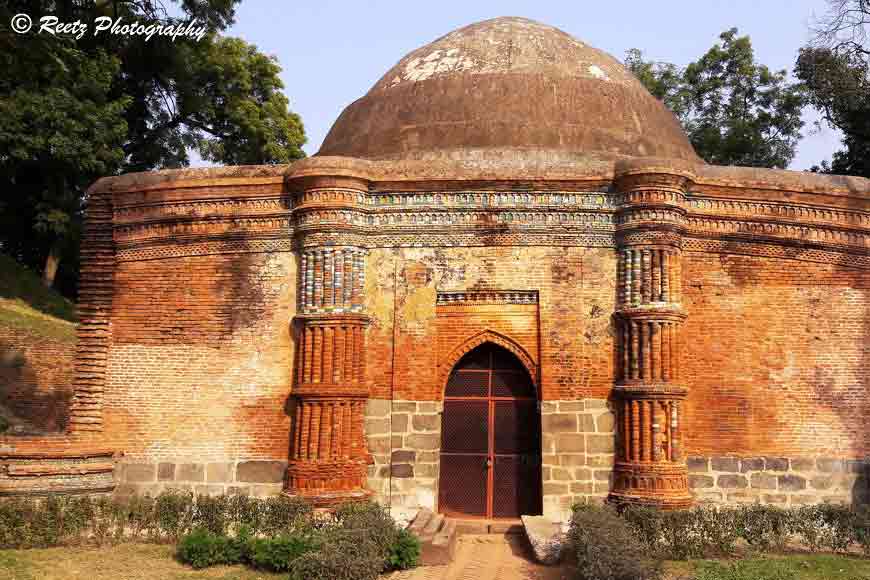 Gumti darwaza
Gumti darwaza
The ‘Dakhil Darwaza’ served as the main entrance to the regal ramparts of Gour through which the Sultans used to enter the palace. The biggest northern imperial gateway was built by Sultan Nasiruddin Mahmud Shah which was further strengthened by Sultan Barbak Shah in the year of 1459 and later upgraded by Sultan Alauddin Husain Shah. Since then, it was mostly restricted for the private movements of royal family. Canons were fired every time when they entered through this gate which earned its colloquial name ‘Salami Darwaza’.
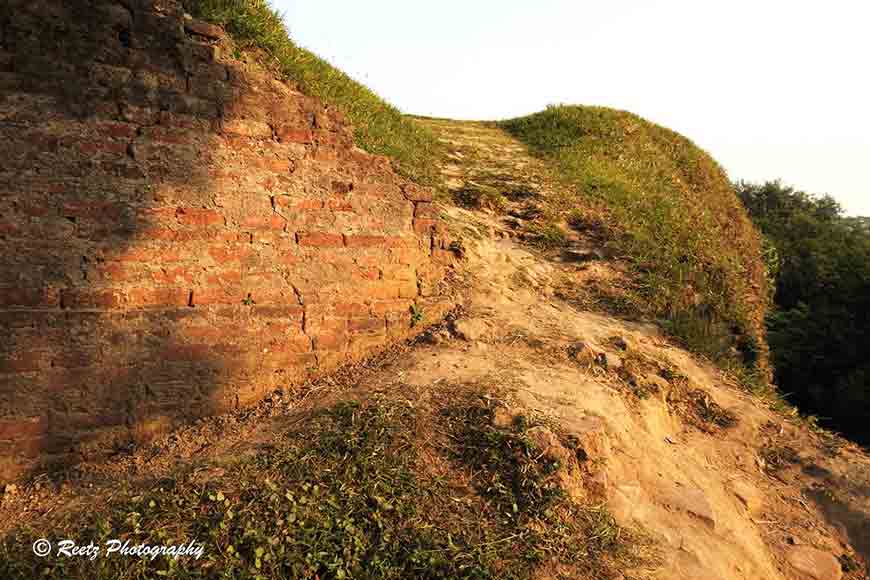 Kotwali gate
Kotwali gate
Made of burnt red bricks, the beautiful terracotta carvings on the porch are impressive which bear a testimony to the beautiful amalgamation of Hindu and Islamic architecture. Photography here is a delight. The piers between the porticos are made of black granite stone which strongly support the overhanging arches. There are four towers at the corners comprising of twelve-sided five-storey curvilinear domes. Inside the gateway there are couple of guardsman rooms which are deserted now. The only sound which could be heard is that of the bats. Towards the southeast corner of the gate, a 22-yard-high wall encloses the ruins of Sultan’s royal palace.
‘Kotwali Darwaza’ was the primary southern gateway of the castle, around 8 kilometres away from ‘Dakhil Darwaza.’ It was built just before the death of Allauddin Khilji in 1235 AD. A gigantic brick laden structure, it served as the main city entrance for the common people. Being always guarded by the ‘Kotwal’ (meaning Police Chief in Persian language), it was named so. Now in complete ruins, it has been overgrown by grass and shrubs all over. Only the peripheral convex shaped towers are partially visible. However, the massiveness of the gateway depicts the level of protection it provided to the castle.
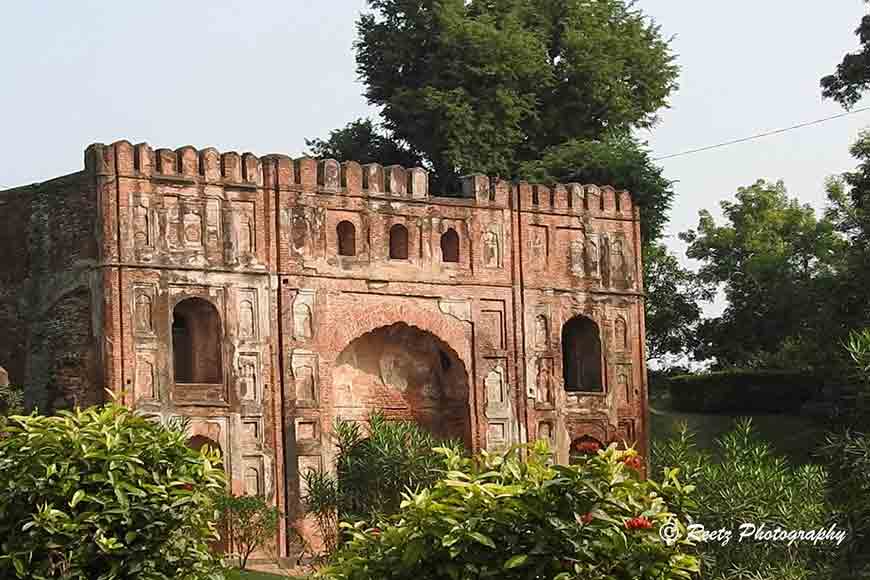 Lukochuri darwaza
Lukochuri darwaza
Presently it forms the Indo-Bangladesh border and is stringently monitored by our Border Security Force (BSF). Upon requesting the BSF Chief, they allowed us to climb up to the top of the ‘Kotwali Gate’ through a natural slope. We could not stop taking the risk to try our ascent up the ruined gate. The view from top was a lifetime treasure, feeling like a Sultan indeed. On our right was Bangladesh’s Nawabganj district while on left was India’s Mahidpur (Malda district). Wow!
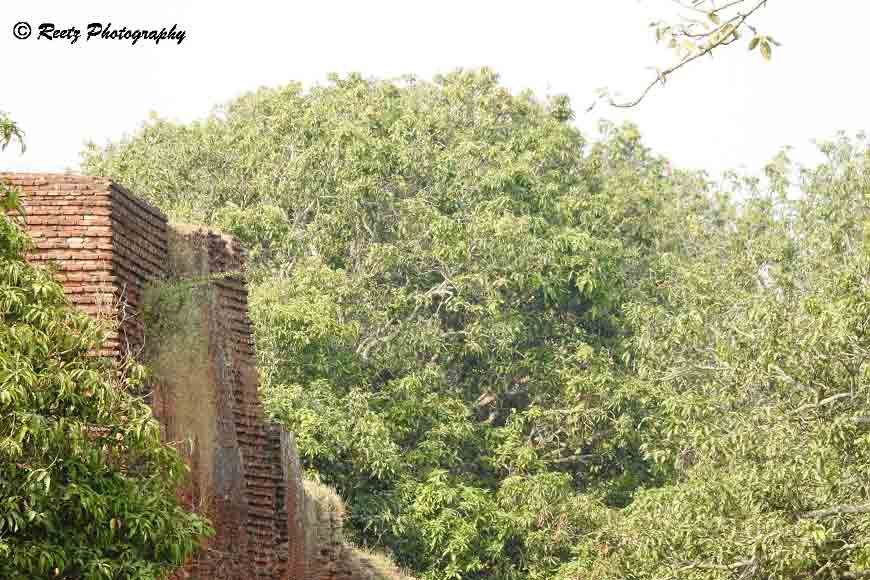 Sneak peek of the Kotwali gate
Sneak peek of the Kotwali gate
The ‘Gumti Darwaza’ is a single domed, relatively smaller gate at the eastern side of the fort. It comprises of enamelled bricks, constructed during the Afghan rule in 1512 AD by Sultan Allauddin Hussain Shah. Originally it served as the entrance to the mausoleum of Chamkan, later being opened for generic use. It is believed that kilos of pure gold brought form Middle East were used to decorate this gate, but right now only remnants of the glazed bricks could be seen. The gate is now closed for public. It can only be witnessed from outside.
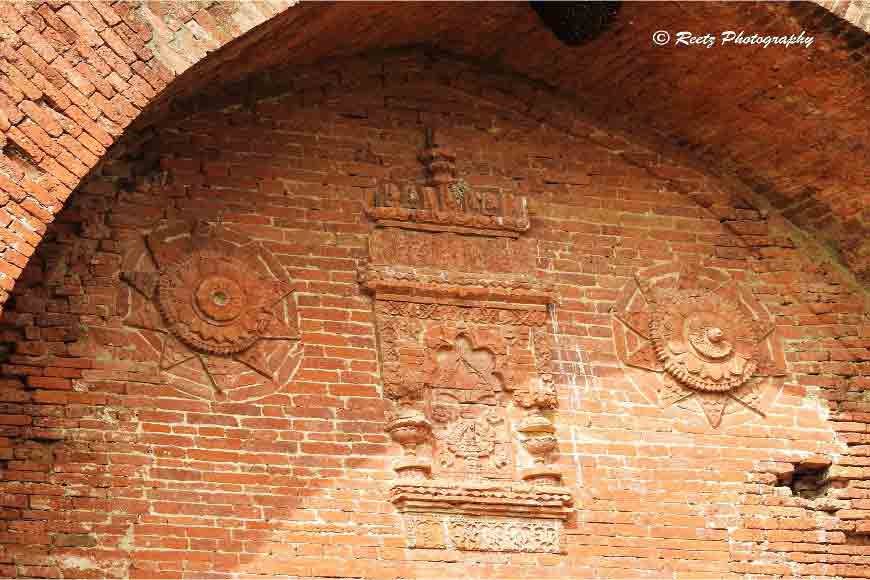 Terracotta work on Daakhil darwaza
Terracotta work on Daakhil darwaza
‘Lukochuri Darwaza’ was the grandest of all the internal gateways used by the Mughals for royal entertainment purposes. With multiple confusing chambers, as the name suggests, this gate was used by the Sultan for fun plays like hide-and-seek with his Begums. However, during the Afghani rule, it was restricted to a private entrance into the inner ramparts of the citadel. But later in 1655 AD, after getting renovated by Sultan Shah Shuja, son of Emperor Shah Jahan, it was converted to a ‘Nuqqarkhana’ (meaning ‘Drummer’s Chamber’ in English). Trumpets and drums were beaten during the Emperor’s entry into and exit from the citadel.
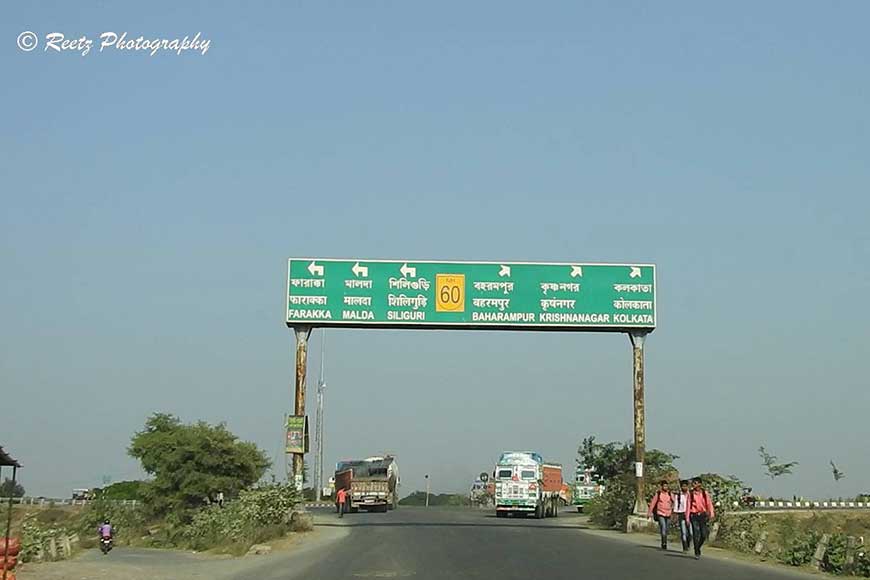 Way to Malda
Way to Malda
This three-storey majestic gateway, made of burnt red bricks, is rectangular in shape; flanked by arched doors in the centre and all four sides. Built in authentic Mughal architectural style, this gate stands as one of the most prominent monuments of Gour. Other than these four gateways, there were two more namely ‘Chand Darwaza’ and ‘Nim Darwaza’, but because of their fragile constructions they do not exist anymore.
Gour has a tremendous potential for tourism like Murshidabad and Bishnupur. Loads of secrets lie hidden inside the century old terracotta bricks of Gour. Hope it will soon feature on the global tourism map.









